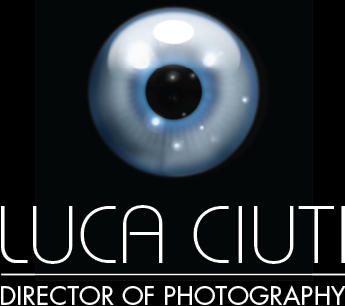I’ve been recently called to shoot a horror/fantasy movie in the Middle East. After many discussions and considerations we ended up choosing to shoot in with an Alexa (Plus HS Classic, with a 16:9 sensor) in 2K Apple ProRes 4444. It’s no secret that I’m a huge fan of the Alexa and its dynamic range, as well as its gentle roll off on the shoulder of the curve as well as its incredible handling of underexposure, but in this case the script required so many low key lighting scenarios that it was simply impossible to do it with a Red Epic for instance, even in its latest Dragon iteration. I’d say the Sony F65 (and the F55 maybe too) may have been able to handle that but there was also to consider the amount of data we were going to later have to ingest and since the region we were in wasn’t the easiest place to find professional hard drives’ suppliers we decided that the Alexa would also help streamline our workflow and it did.
Before principal photography began I organised a simple set-up for costume, make-up/hair and lighting test. I tested various lenses, exposures, filters and ISO rating. I decided to go for a 1/4 ProMist on the lens for the “period scenes” (half the film was set 600BC, the rest nowadays) to take a little bit of the digital edge off. If I had to find one thing I don’t like about the Alexa is that sometimes it feels a little bit too sharp – in fact I also decided to use a set of the old and trustworthy Zeiss Superspeed Prime lenses, which gave the image a more vintage look but also had the speed but not the cleaniness of say the Zeiss Master Primes for example.
The Alexa performed well with the various set-ups but upon rating it 400 ISO, moving the dynamic range towards the bottom of the curve gave that extra crispness to the shadows that was quite striking to be honest. It really allowed a 4+ stop underexposure to look clean and noise free. The setting basically add one stop to the already striking low light capturing capabilities of the German camera. This has allowed me to play with low light levels as well as to push the underexposed zones of the image without ever looking muddy. The feel is almost that of an added third dimension to an area of exposure that sometimes can look really flat. It benefited me by also allowing me not worry too much if I had an area I could not for some reason bring as up exposure wise as I would have wanted. I would then bring it up during grading without it ever adding noticeable noise.
For daylight scenes I would always go back to its standard 800 ISO rating though.
The 400 ISO rating can be a double edge sword only when you’re playing with too little light overall. The setting obviously forces you to open one stop on the lens so that has to be kept in mind. If with the light available your stop is T2 at 800 ISO then at 400 you’ll have T1.3 and that to me is way too extreme as base stop (although I would use it if that was the only way to bring a shot home).
In conclusion as long as lighting is not an issue, for a contrasty low-key lighting approach 400 ISO on the Alexa is a good trick of the trade.
